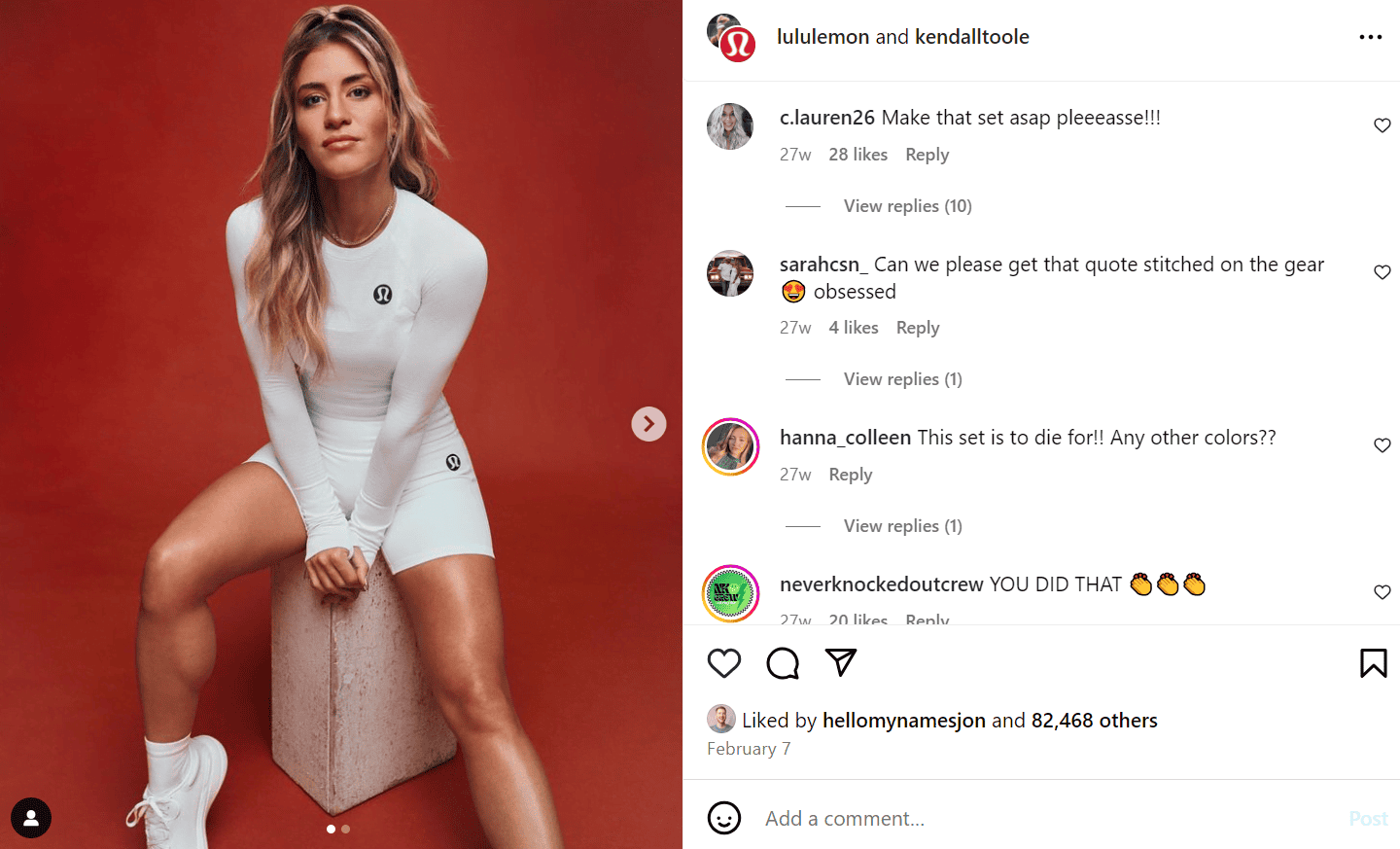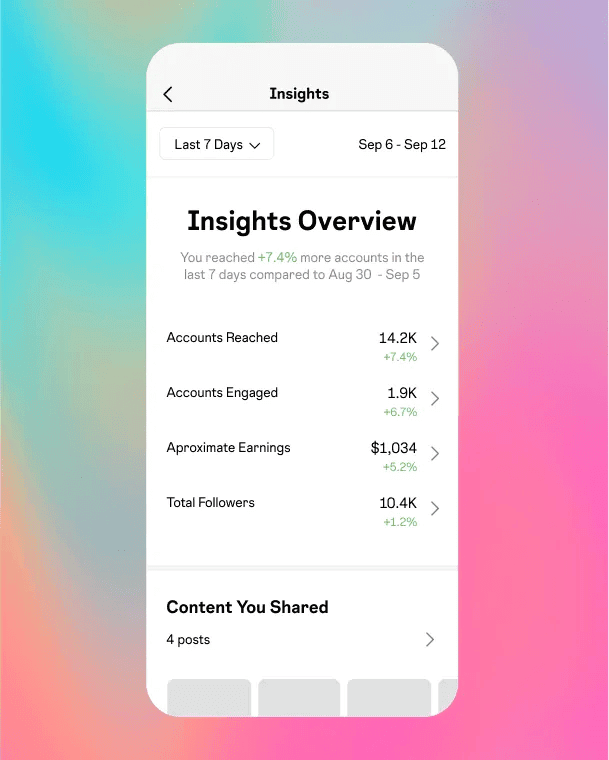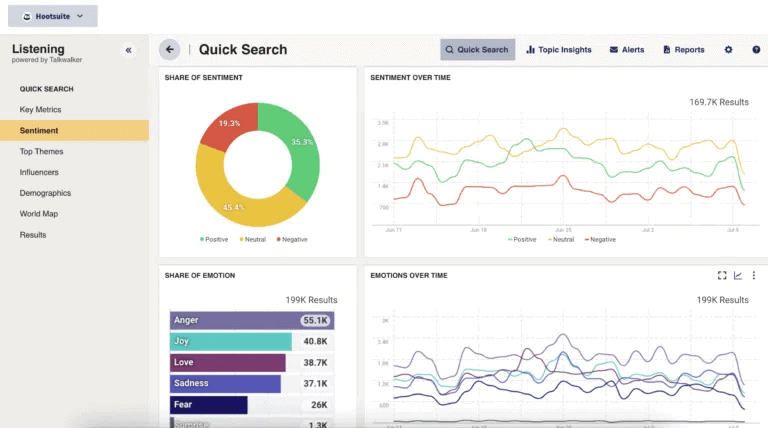Your business has a presence on social media—but is it enough? Whether you’re trying to boost sales or increase brand awareness, social media is an essential tool. It’s where many customers might come across your brand for the first time, and it’s where they become loyal followers.
If you want to boost your social media presence and performance, you need touchpoint analysis. This article will cover how to identify and refine these key moments of engagement through touchpoint analysis, so you can perfect your social media strategy.
What is Touchpoint Analysis?

Screenshot sourced from Etsy
Touchpoint analysis in social media is all about looking at the different ways customers interact with your brand on your social pages. Evaluating things like comments, likes, shares, and direct messages means you get a clearer picture of how people are engaging with your brand.
Touchpoint analysis is a key part of getting that full 360 customer view. It’ll help you understand their journey and how they feel about your brand at each step.
These touchpoints can be categorized into several types. While this article focuses on social media, it’s worth thinking about all customer touchpoints, including the ones below.
1. Pre-Purchase Touchpoints
These are all the moments before a customer decides to buy from you, and where they first get to know your brand. For example:
- Social media: Engaging with your posts and ads or influencer content on platforms like Instagram, Facebook, Twitter, and LinkedIn.
- Online ads: Those banner ads or pop-ups that grab their attention and introduce them to your brand.
- Search engine results pages: When they’re searching for information and your website pops up in the search results—whether through organic links or paid ads.
- Content marketing: Reading your blogs or watching videos that educate or entertain them.
- Word of mouth and reviews: Recommendations from friends and family, or customer reviews on platforms like Yelp, TrustPilot, Google, and Amazon.
- Email marketing: Promotional emails or newsletters that highlight what you offer.
2. Purchase Touchpoints
Now, your customer is ready to make a purchase. These are the touchpoints that matter most during that transaction:
- Website or app: Navigating through your product pages and checking out what you have to offer. And, of course, making a purchase on your checkout page.
- Customer service: Interacting with your support team via live chat or phone if they need help before finalizing their purchase.
3. Post-Purchase Touchpoints
These touchpoints happen after the customer has made a purchase. They’re just as important as the pre-purchase touchpoints and include:
- Order confirmation: Receiving emails or notifications confirming their purchase, making sure everything went through smoothly.
- Shipping updates: Keeping them updated on when their order will arrive through notifications or emails.
- Unboxing: That moment of excitement when they receive and open their package.
- Customer support: Providing ongoing support for any post-purchase questions or returns.
- Follow-up communication: Sending a quick follow-up email, like a survey or a special offer. This keeps the conversation going and encourages repeat purchases.
4. Loyalty Touchpoints

Free to use image sourced from Unsplash
Once a customer has made a purchase, the goal is to keep them coming back and turning them into loyal advocates for your brand. Here’s how you can keep them engaged:
- Loyalty programs: Offering points (often with discounts or rewards) to show your appreciation for their continued business.
- Social media engagement: Keeping the conversation going on social media even after the purchase.
- Referral programs: Encouraging them to spread the word about your brand with incentives for referring friends and family.
- Community engagement: Inviting them to join brand-related communities or events, whether they’re online or in-person.
- Feedback requests: Asking for reviews or feedback to help improve your offerings and show them that their input matters.
Why is Touchpoint Analysis Important for Social Media?

Free to use image sourced from Unsplash
Touchpoint analysis is crucial for social media, and here’s why:
- Get a deeper understanding of your audience: Analyzing how people interact with your brand, from likes and comments to shares and direct messages, helps you get valuable insights into them. You can find out more about their interests and needs, which informs everything from marketing to product development.
- Improve your customer engagement: Understanding where and how your audience engages with your content helps you create more relevant and engaging posts. That means stronger connections and more meaningful interactions across all your social media channels.
- Offer a better customer experience: When you know what your customers appreciate and what frustrates them, you can adjust your approach to provide a smoother, more satisfying experience.
- Follow a data-driven approach to decision-making: Instead of relying on guesswork, touchpoint analysis gives you solid data that can guide your social media strategy. This means you can invest your time and resources in areas that are proven to be effective.
- Get a higher ROI on your social media efforts: Focusing on the touchpoints that matter most means you can maximize the impact of your social media efforts. This focus will lead to better results and, ultimately, a higher return on investment (ROI).
How to Perform Touchpoint Analysis: A Step-By-Step Guide
Identify Your Social Media Touchpoints

Screenshot source from Instagram
You need to start by thoroughly identifying all the ways your audience interacts with your brand on social media. Understanding these touchpoints provides the foundation for your entire analysis and will be useful for future marketing campaigns from product releases to lead generation.
Begin by listing every possible interaction your audience can have with your brand across all social media platforms. This includes:
- Likes and reactions: These are the simplest forms of engagement and they show initial interest or approval of your content.
- Comments: Comments provide more direct feedback. They allow customers to express opinions or ask questions. These interactions often offer deeper insights into customer sentiment.
- Shares and retweets: When users share your content, it not only extends your reach but also suggests that the content resonates enough for them to want to spread it.
- Mentions: Mentions can be direct (like tagging your brand in a post) or indirect (like talking about your brand without tagging it). Both types provide valuable insight into how your brand is perceived and discussed.
- Direct messages: These private interactions are often more personal and can involve customer service inquiries, complaints, or feedback.
- Story interactions: On platforms like Instagram and Facebook, interactions with Stories, such as replies, emoji reactions, and poll responses, are also key touchpoints.
- User-generated content: Any content created by your audience that features or references your brand, such as reviews or videos, is a touchpoint that reflects your brand’s reach.
- Reviews and ratings: If your social media presence includes platforms where users can leave reviews (like Facebook), these touchpoints can also influence the opinions of other potential customers.
You should then create a comprehensive catalog of these touchpoints. Detail the types of interactions and the platforms where they occur as well as any patterns or trends you notice.
Collect and Organize Data

Image sourced from creators.instagram.com
Once you’ve identified all the social media touchpoints, the next step is to gather and organize the data associated with each interaction.
Begin by collecting data from all the touchpoints you’ve identified across different social media platforms. Each platform offers its own set of data points. For example:
- Facebook Insights: Provides data on post engagements, reach, and user demographics.
- Twitter Analytics: Offers details on tweet impressions, retweets, mentions, and follower growth.
- Instagram Insights: Includes data on likes, comments, shares, and story interactions.
- LinkedIn Analytics: Focuses on metrics like impressions, followers, clicks, shares, comments, and user demographics.
Once you’ve gathered the raw data, the next step is to organize it for analysis. This is where ETL processes (Extract, Transform, Load) come into play:
- Extract: Pull data from each platform, either through exports or data aggregation tools.
- Transform: Clean and standardize the data so that you have consistency across platforms. This might involve removing duplicates and correcting errors. You’ll also need to make sure that metrics like engagement rates are comparable.
- Load: Load the transformed data into your analysis tool or database, where it can be organized and analyzed.
Finally, you should organize the data in a way that supports easy analysis. This might include categorizing data by platform or engagement type or segmenting it based on customer demographics.
Analyze Customer Journeys
With your data now organized, the next step is to delve into the customer journeys across your social media touchpoints.
Customer journeys represent the various paths users take as they engage with your brand. This runs from initial contact to final actions like making a purchase or following your page.
You can begin by mapping out these journeys to identify common patterns and sequences of interactions. For example, you might find that users often start by liking a post, then commenting, and finally clicking through to your website.
Look for touchpoints that frequently precede key decisions, such as a purchase or mailing list sign-up. Understanding these patterns will help you pinpoint the most influential moments in the customer journey.
Also, think about and analyze variations in journeys across different customer segments. For example, new customers might interact differently than loyal followers.
Analyzing these differences means you can tailor your strategies and come up with more social media post ideas to meet the specific needs and behaviors of different groups, optimizing the overall customer experience.
Invest in Advanced Data Analysis Tools

Image sourced from blog.hootsuite.com
You don’t have to do touchpoint analysis alone. Instead, after mapping out customer journeys, you can use more advanced analytics tools to gain deeper insights.
These tools can process large volumes of data and often reveal trends and patterns that might not be immediately obvious.
Start by looking for platform as a service examples that offer robust tools for data analysis, such as machine learning algorithms and big data processing capabilities. They can help you explore the relationships between different touchpoints and segment your audience more effectively. Many can even help you predict future behaviors.
You can also use specialized tools for sentiment analysis. This helps you gauge the tone of customer interactions. Understanding whether customer feedback is positive, negative, or neutral across different touchpoints is incredibly useful.
It allows you to assess customer satisfaction more accurately and identify areas that need improvement. Leveraging these social media tools means you can turn raw data into actionable insights.
Optimize and Refine Your Social Media Strategy
The final step is to use the insights you’ve gathered to optimize and refine your social media strategy. The goal here is to enhance the effectiveness of each touchpoint and improve the overall customer experience. Here’s how to do it.
- Focus on high-impact touchpoints: Identify which touchpoints have the most significant impact on customer behavior and outcomes. If you find that direct messages often lead to conversions, you might dedicate more resources to customer service on that platform. On the other hand, if certain touchpoints are underperforming, you might need to rethink your approach, whether it’s adjusting the content, the timing, or even the platform.
- Personalize customer interactions: Tailoring your content and responses to different customer segments can lead to higher engagement and satisfaction. Luckily, you can use your touchpoint analysis to refine this. For example, if new customers tend to drop off after their first interaction, you might implement follow-up strategies, such as personalized messages or offers, to keep them engaged.
- Test your tactics: Optimization is an ongoing process. So, you should implement changes based on your insights and then assess their impact. You might use A/B testing to compare different strategies and identify what works best. For example, you could test different types of video versus photo content, or trial different Instagram scheduling times to see which yields the best results.
Final Thoughts: Why Social Media Touchpoints Matter
You could be investing large sums of time and money into your social media presence, but if your touchpoints are ignored, this could be time and money wasted.
Touchpoint analysis gives you the data to make smart choices. Rather than posting blindly and dedicating time to the wrong channel or touchpoint, you’ll have insights into where to invest your efforts for more sales and more engaged customers in the future.


